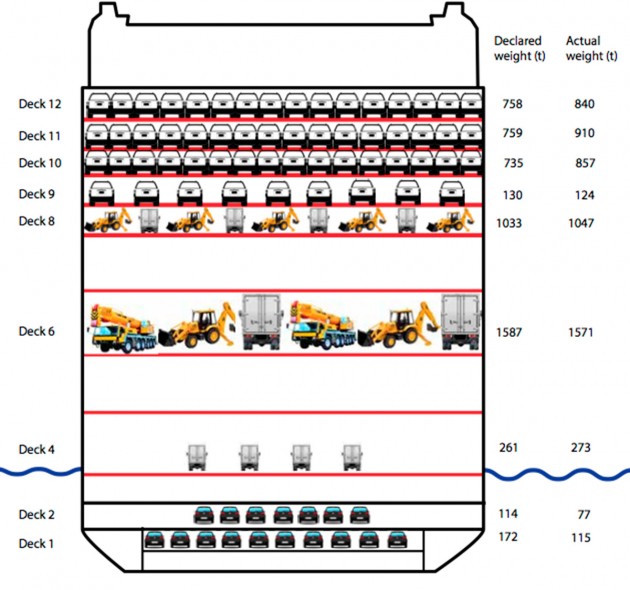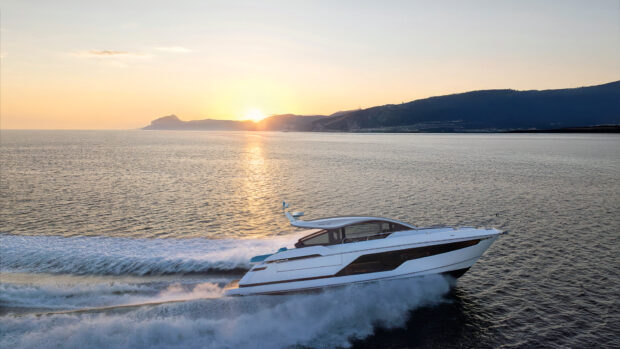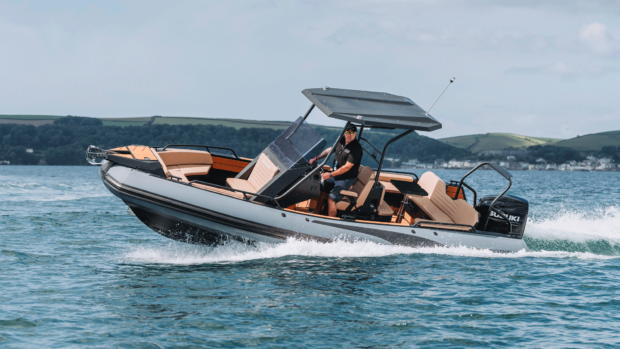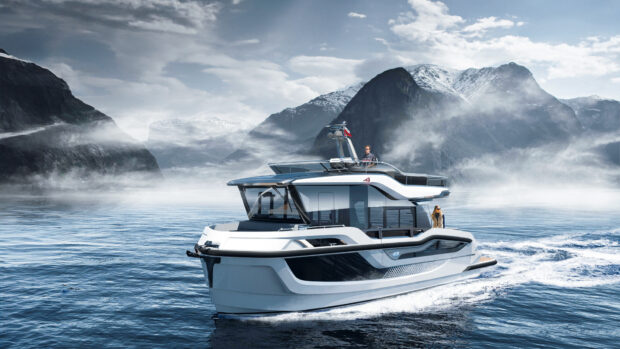The MAIB report reveals that ballasting was overstated and the weight of the cargo was underestimated before Höegh Osaka left port
The MAIB has released its report into the grounding of MV Höegh Osaka last year, which resulted in a 19-day salvage operation.
Investigators claim that the 180m car carrier had overestimated its ballast by 635 tonnes and underestimated the weight of its cargo by 265 tonnes prior to leaving port.
This resulted in a dramatic grounding on Bramble Bank, with lifeboats and Coastguard helicopters scrambled to rescue the 25 people on board.
The 86-page write-up reveals that one crewmember was seriously injured while trying to escape the stricken vessel. The unnamed man fell 18m down a cross-alleyway, breaking an arm and a leg as a result.
The report concludes: “The fundamental requirements for establishing a suitable margin of stability before departure had been eroded on board Höegh Osaka such that unsafe practices had become the norm.”
Loading mix-up
MV Höegh Osaka was loaded up with cargo at the Port of Southampton from 0621 to 1750 on January 3, 2015.
Operators Wallem had originally planned to pick up cargo at Hamburg and Bremerhaven first, with Southampton being their last port before departing for the Middle East.
The route was revised in December, meaning Southampton would be the first port of call, but the original cargo plans remained in place. As a result, the upper decks were full and the lower decks were lightly loaded.
What’s more, the cargo weight was estimated rather than measured, a practice that is not uncommon amongst roll-on roll-off car carriers. This led the chief officer to underestimate the total cargo weight by 265 tonnes.
 To make matters worse, 616 tonnes of additional “high and heavy cargo” was loaded one hour prior to departure.
To make matters worse, 616 tonnes of additional “high and heavy cargo” was loaded one hour prior to departure.
Stevedores at Southampton Port are encouraged to minimise empty space on departing vessels, as this is normally the last port of call before long inter-continental journeys.
The MAIB report reveals that the port captain authorised this extra cargo without informing the chief officer or the master – a 50-year-old Indian, who had 32 years’ experience, but was making his first journey on Höegh Osaka.
Ballasting issues
Another contributing factor was the insufficient ballast on board the 51,000-tonne vessel, with the tanks filled to 69% of their capacity.
Höegh Osaka used a water ballast system to ensure stability, but the gauges were found to be defective.
This issue was pointed out by Maersk in July 2014 when they handed the vessel over to Wallem, but the repair was not prioritised by the new operators.
 Furthermore, the MAIB report reveals that the chief officer would regularly overestimate the level of ballasting on board by up to 900 tonnes.
Furthermore, the MAIB report reveals that the chief officer would regularly overestimate the level of ballasting on board by up to 900 tonnes.
The MAIB used a stability modelling simulation to estimate that Hoegh was 635 tonnes below its ideal ballasting level when it left port.
Stability calculations
When the stern loading ramp was lifted at 1930 an immediate list of 7 degrees was noted and immediately rectified by using the ship’s on-board ballasting system.
A pre-departure estimation put the ship’s centre of gravity at 1.46m below the metacentre, which is more than the IMO recommended minimum of 1.34m.
However, given the measurements and simulations carried out by its investigators, the MAIB put this figure at close to 0.7m.
No immediate problems were evident when the Höegh Osaka passed Calshot Spit at a speed of 10 knots, but by the time it rounded Bramble Bank, the speed had increased to 12 knots and the vessel began to list severely.
A bow trim angle of 0.6m further reduced the effectiveness of the vessel’s handling, and at 2110 after the propeller and rudder lifted clear of the water, the vessel ran aground on Bramble Bank.










